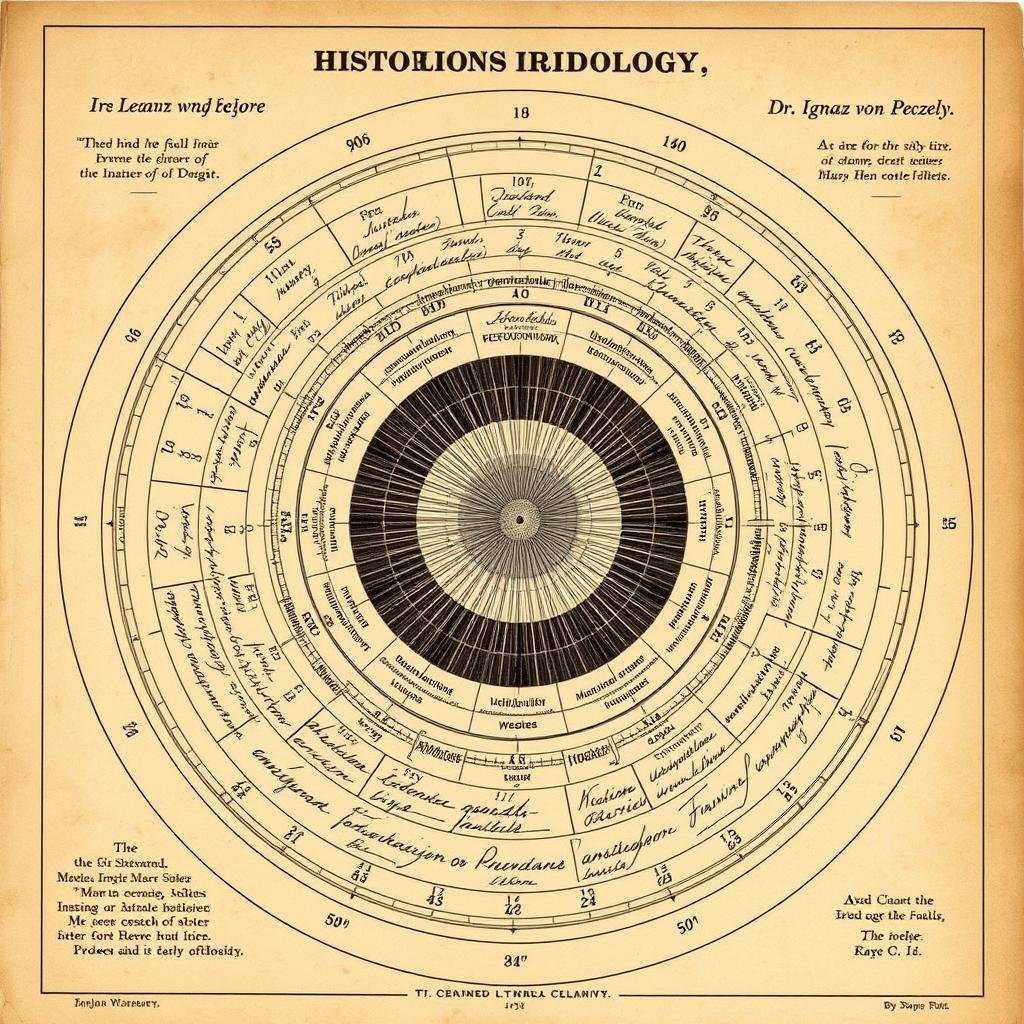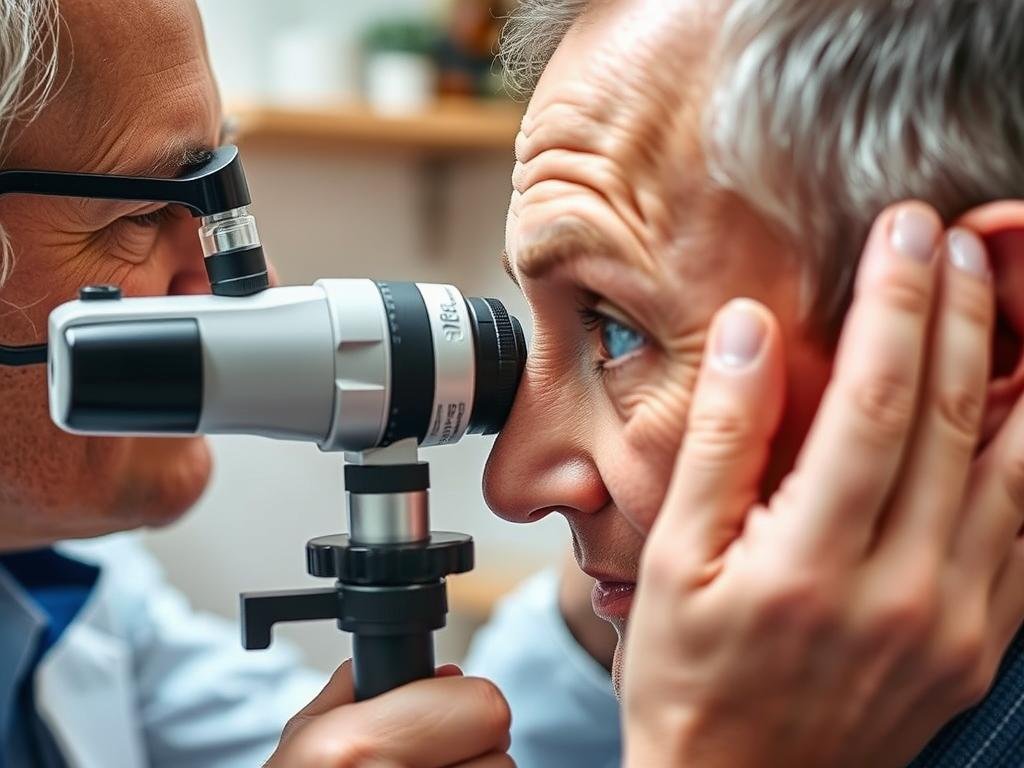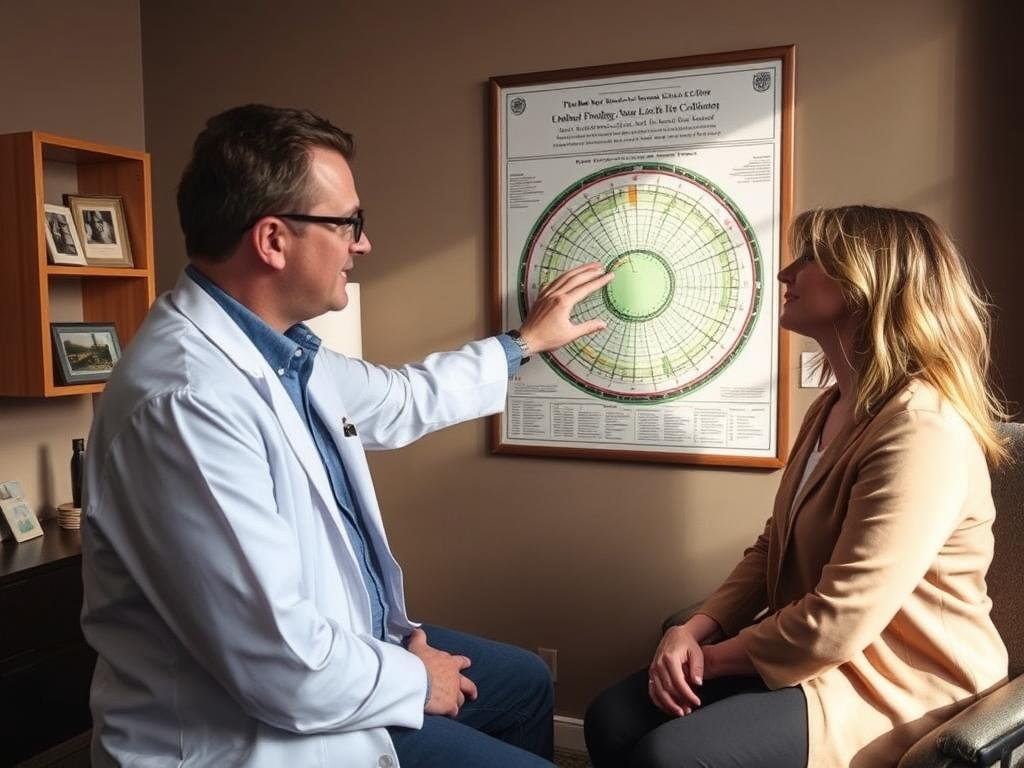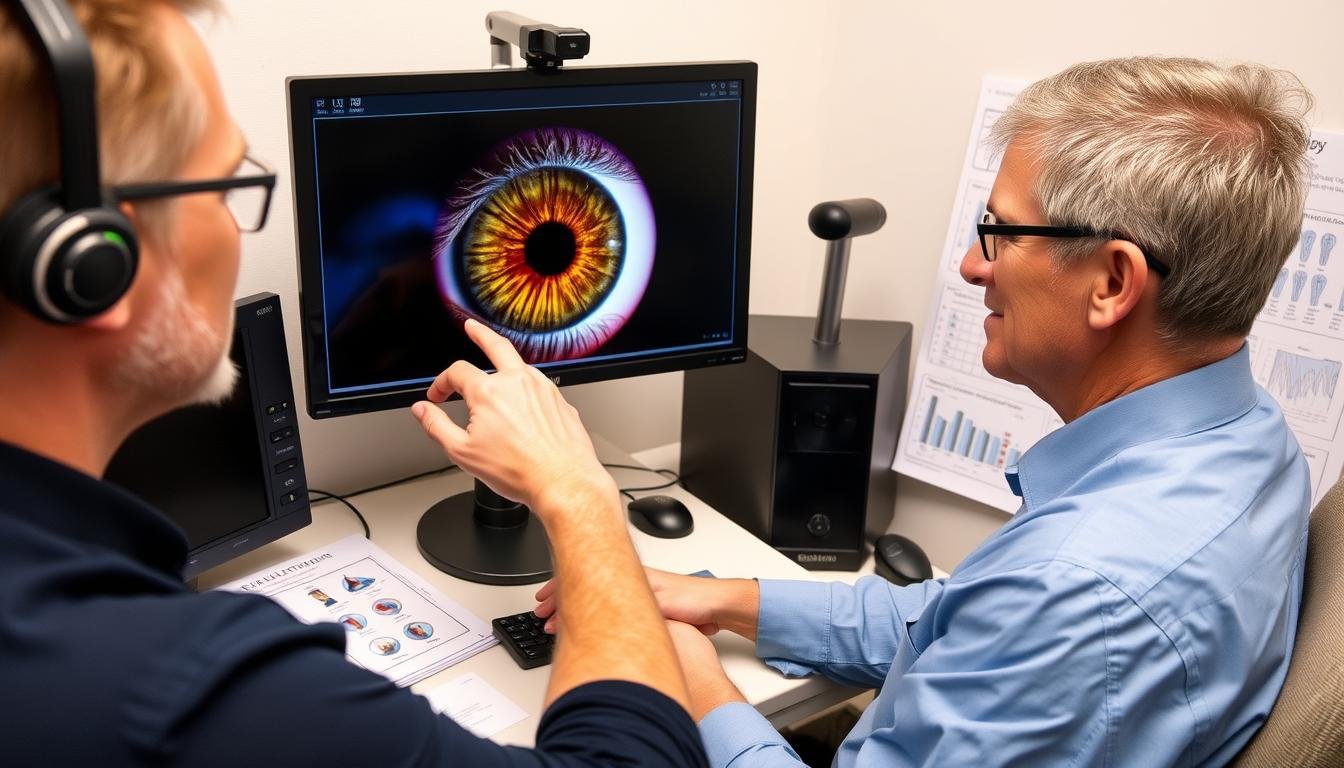The fascinating world of iridology opens a window into understanding your health through the patterns, colors, and markings in your iris. For centuries, practitioners have studied these intricate eye maps to identify potential health concerns and bodily imbalances. Whether you’re new to alternative health practices or looking to deepen your knowledge, this comprehensive guide will answer all your questions about iridológia and how they can provide insights into your wellbeing.
What Is an Iridology Chart?
A iridológia is a detailed map that divides the iris into zones, each corresponding to specific organs and systems in the body. These charts serve as essential tools for iridologists who examine the iris to identify potential health issues or weaknesses. The practice is based on the premise that the iris contains a multitude of nerve endings that connect to various parts of the body through the nervous system.
Developed by Dr. Ignaz von Peczely in the 19th century, iridology charts have evolved over time but maintain the core principle that the iris reflects the condition of the body’s tissues. Modern charts typically divide the iris into approximately 80-90 zones, creating a comprehensive map of bodily systems.
Who created the first iridology chart?
The first systematic iridology chart was created by Dr. Ignaz von Peczely, a Hungarian physician in the 1860s. The story goes that as a child, he noticed changes in an owl’s iris after the bird suffered a broken leg. This observation inspired him to develop the first comprehensive chart mapping iris zones to body parts.
Download Our Free Iridology Reference Guide
Get instant access to our comprehensive iridology reference materials, including a high-resolution chart and beginner’s interpretation guide.
Stiahnite si zadarmo graf
How to Read an Iridology Chart
Tlmočenie iridológia requires understanding the relationship between specific iris zones and their corresponding body parts. The iris is typically divided into sections like a clock face, with each section linked to different organs and systems.
Key Zones in an Iridology Chart
Right Iris (Corresponds to Right Side of Body)
- Top section (12 o’clock): Brain and head
- Right section (3 o’clock): Liver and gallbladder
- Bottom section (6 o’clock): Intestines and colon
- Left section (9 o’clock): Spine and heart
Left Iris (Corresponds to Left Side of Body)
- Top section (12 o’clock): Brain and head
- Right section (3 o’clock): Heart and spleen
- Bottom section (6 o’clock): Intestines and reproductive organs
- Left section (9 o’clock): Kidneys and adrenals
When reading an iridology chart, practitioners look for various markings, colors, and patterns that may indicate health conditions:
| Znamenie Iris | Vzhľad | Potenciálna indikácia |
| Radial Lines | Straight lines radiating from pupil | Normal structure |
| Lacuna | Closed, lake-like formations | Inherent weakness in organ/tissue |
| Krypty | Open, pit-like formations | Acute or active conditions |
| Pigmentation | Dark spots or discoloration | Toxin accumulation or inflammation |
| Prstene | Circular formations around iris | Stress or nervous tension |
Can I learn to read my own iris using an iridology chart?
While it’s possible to learn basic iris reading, proper interpretation requires training and experience. You can start by familiarizing yourself with the fundamental zones on an iridology chart, but consulting with a trained iridologist is recommended for accurate health assessments.
Different Types of Iridology Chart Systems
Several iridológia systems have developed over the years, each with its own approach to mapping the iris. Understanding these different systems can provide a more comprehensive view of how iridology is practiced worldwide.
European/Jensen System
Developed by Bernard Jensen, this system divides the iris into 12 clock-like sections with multiple rings. It’s widely used in the United States and Europe and focuses on physical conditions.
German/Deck-Angerer System
Created by Josef Deck and expanded by Peter Angerer, this system uses a more detailed topographical approach with emphasis on constitutional types and psychological aspects.
Russian System
Developed by Russian researchers, this system incorporates elements of both Western and Eastern approaches, with particular attention to the relationship between iris signs and the nervous system.
Which iridology chart system is most accurate?
There’s no definitive answer to which system is most accurate, as each has its strengths. Many modern practitioners combine elements from different systems. The European/Jensen system is perhaps the most widely used, but the best approach often depends on the practitioner’s training and the specific health aspects being examined.
Benefits of Using an Iridology Chart
While scientific validation of iridology remains limited, many practitioners and enthusiasts report numerous benefits from using iridológia as part of a holistic health approach.
Potenciálne výhody
- Metóda neinvazívneho hodnotenia
- May identify potential health issues before symptoms appear
- Provides a holistic view of body systems and their interactions
- Can complement other health assessments
- Podporuje preventívne zdravotné opatrenia
Obmedzenia
- Limited scientific evidence supporting efficacy
- Not recognized by conventional medicine
- Cannot diagnose specific diseases
- Interpretation varies between practitioners
- Nemalo by nahradiť lekársku diagnózu
Common Misconceptions About Iridology Charts
Despite its growing popularity, iridology is often misunderstood. Let’s address some common misconceptions:
Môže iridológia diagnostikovať špecifické choroby?
No, iridology cannot diagnose specific diseases. Rather than diagnosing conditions, iridology identifies potential weaknesses or imbalances in body systems. It’s best used as a complementary assessment tool alongside conventional medical approaches.
Do iris patterns change when health conditions improve?
The fundamental structure of the iris remains relatively stable throughout life. While some practitioners claim to observe changes in pigmentation or other features with health improvements, the basic iris structure is determined genetically and doesn’t significantly change. What may change are temporary signs like inflammation markers.
Je iridológia vedecky dokázaná?
Conventional medicine does not recognize iridology as a scientifically validated diagnostic method. Several controlled studies have not found evidence supporting iridology’s diagnostic claims. However, many practitioners and clients report beneficial insights from iridology assessments as part of a holistic approach to health.
Explore Our Comprehensive Iridology Resources
Join our community to receive regular updates on holistic health practices, including detailed guides on using iridology charts for personal wellness.
Subscribe to Our Newsletter
Praktické aplikácie analýzy iridologického grafu
While iridology should not replace conventional medical diagnosis, many find value in its practical applications as part of a holistic health approach. Here’s how iridológia are commonly used in practice:

Health Assessment
Practitioners use iridology charts to identify potential areas of weakness or imbalance in the body. This can help create personalized health plans that address specific needs before symptoms develop.
Výživové vedenie
Iris analysis may reveal nutritional deficiencies or digestive weaknesses, allowing for targeted dietary recommendations to support overall health and address specific body systems.
Ústavná analýza
Different iris types (lymphatic, hematogenic, biliary) are believed to indicate different constitutional tendencies, helping practitioners understand an individual’s inherent strengths and weaknesses.
Komplementárne hodnotenie
Many holistic health practitioners use iridology alongside other assessment methods like pulse diagnosis, tongue analysis, or conventional medical tests for a more comprehensive health picture.
How often should I have an iridology reading?
For general health monitoring, many practitioners recommend an iridology assessment once or twice a year. However, if you’re addressing specific health concerns or making significant lifestyle changes, more frequent readings (every 3-6 months) might be beneficial to track subtle changes in the iris that could indicate improvements in your body’s systems.
Can I create my own iris chart?
While you can document your own iris patterns through photography, creating an accurate iridology chart requires specialized knowledge. Instead of creating your own chart, it’s better to use established charts developed by experienced iridologists and learn how to apply them to your unique iris patterns.
Where to Find Reliable Iridology Chart Resources
If you’re interested in exploring iridology further, it’s important to find reliable resources. Here are some recommended sources for iridológia and educational materials:
Books & Publications
- “Iridology Simplified” by Bernard Jensen
- “The Practice of Iridology” by Farida Sharan
- “Iridológia: Kompletný sprievodca” by Toni Miller
- International Journal of Iridology Practitioners
Profesionálne organizácie
- Asociácia medzinárodných iridológie odborníkov
- Guild of Naturopathic Iridologists
- Kanadský inštitút iridológie
- American College of Iridology
Online Resources
- Iridology International (training programs)
- World Iridology Research Organization
- Natural Health Techniques (free guides)
- Holistic Health Online (webinars)
How do I find a qualified iridologist?
To find a qualified iridologist, check with professional organizations like the International Iridology Practitioners Association or the Guild of Naturopathic Iridologists. Look for practitioners with formal training and certification in iridology. Ask about their experience, approach, and whether they work alongside other healthcare modalities. A reputable iridologist will be transparent about the limitations of iridology and won’t make extravagant health claims.
What equipment do I need to start studying iridology?
For beginners interested in studying iridology, you’ll need: a good quality iris chart (preferably laminated for durability), a magnifying glass (5-10x magnification), a penlight for illumination, and a basic iridology textbook. As you advance, you might consider a specialized iriscope or digital camera with macro lens capabilities for capturing high-resolution iris images. Many practitioners now use digital iridology software for analysis.
Start Your Iridology Journey Today
Download our comprehensive beginner’s guide to iridology, complete with printable charts and step-by-step instructions for conducting your first iris analysis.
Get Your Free Starter Kit
Conclusion: The Value of Understanding Iridology Charts
Iridology offers a unique perspective on health assessment through the fascinating study of iris patterns. While scientific validation remains limited, many find value in the holistic insights that iridológia can provide when used as part of a comprehensive approach to wellness.
Whether you’re a health professional looking to expand your assessment tools or an individual interested in exploring alternative health perspectives, understanding iridology charts can open new avenues for health awareness. Remember that iridology works best as a complementary tool alongside conventional healthcare, not as a replacement for medical diagnosis.
As you continue your exploration of iridology, maintain a balanced perspective that appreciates both its potential benefits and limitations. With the right resources and guidance, iridology can become a valuable component of your holistic health journey.

Is iridology covered by insurance?
In most countries, iridology consultations are not covered by conventional health insurance plans. However, some complementary health insurance policies or health savings accounts may cover iridology as part of alternative health services. Always check with your specific insurance provider about coverage options before scheduling a consultation.
How does iridology compare to other alternative assessment methods?
Iridology is one of several holistic assessment methods that examine physical features to evaluate health. Other similar practices include face reading (physiognomy), tongue diagnosis (used in Traditional Chinese Medicine), pulse diagnosis, and reflexology. Each method has its own approach and focus areas. Many holistic practitioners use multiple assessment techniques together for a more comprehensive understanding of health patterns.
Ready to Learn More?
Join thousands of health enthusiasts who receive our weekly newsletter featuring the latest research, tips, and resources on iridology and holistic health practices.









